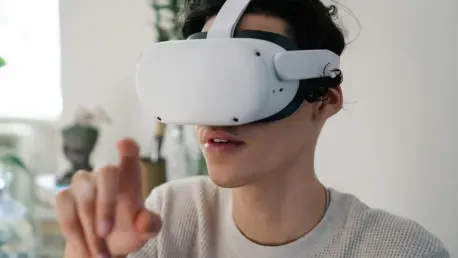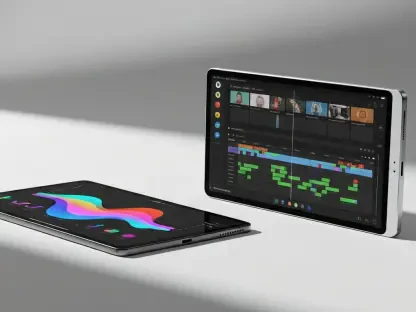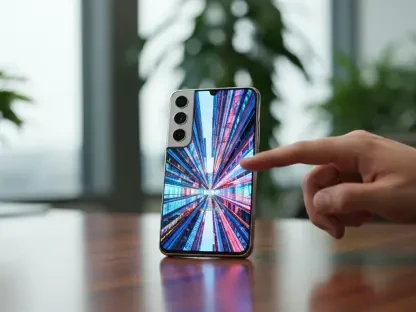Augmented reality glasses have been slowly entering the market, promising a future where digital information merges seamlessly with the physical world. Amidst competition, the Rokid Max 2 AR glasses stand out with their unique approach to vision correction, providing myopia adjustments without external lenses. As consumers increasingly seek portable entertainment with high visual fidelity, the Rokid Max 2 emerges as a notable contender. This review delves into the glasses’ standout features, analyzing both their performance and limitations in the context of current consumer demands.
A Closer Look at Rokid Max 2’s Innovative Design
The Rokid Max 2 AR glasses introduce a revolutionary feature: their built-in myopia adjustments. This advancement accommodates users with prescriptions ranging from 0.00D to -6.00D, eliminating the need for additional corrective lenses. This innovation speaks volumes about accessibility in augmented reality, particularly for individuals who struggle to find compatible prescriptions for AR devices. On a broader scale, such enhancements could reshape the way smart glasses address visual impairments.
Design and aesthetic choices play a crucial role in user experience, and the Rokid Max 2 does not disappoint with its sleek, sunglasses-like appearance. At 2.65 ounces, these glasses prioritize extended wear comfort. The frames, while slightly bulkier than traditional sunglasses, incorporate functional elements like a USB-C port for device connectivity. Such thoughtful design ensures a balance between visual appeal and practical utility, catering to users who desire both style and functionality.
Evaluating Visual and Audio Performance
Performance in augmented reality hinges on display quality, and Rokid Max 2’s Sony micro-OLED panels deliver high-resolution visuals. With specifications boasting a full-HD image, 120Hz refresh rate, and exceptional contrast ratio, users can expect a vibrant and immersive viewing experience. This visual prowess is complemented by backdrop options—polarized or fully enclosed lenses—that allow for varying degrees of immersion while maintaining environmental awareness.
However, the audio capabilities fall short in comparison to the impressive visual performance. While adequate for quieter environments, the sound system lacks depth and clarity, posing challenges in busier settings. Pairing the glasses with Bluetooth headphones can significantly enhance the auditory experience, offering privacy and reduced noise interference, which are crucial for uninterrupted entertainment viewing.
Consumer Trends Shaping AR Glasses
The augmented reality market is evolving rapidly, driven by consumer desire for immersive entertainment in a portable form. Rokid Max 2 positions itself firmly within a competitive landscape, offering unique features that cater to specific visual needs. The inclusion of myopia adjustments highlights a commitment to accessibility, though broader consumer adoption may be hampered by audio deficiencies and optical reflections in brighter settings.
Real-world applications are abundant, with entertainment and gaming sectors embracing these glasses for their portability and immersive capabilities. While noted for private cinematic experiences, these glasses face competition from higher-priced alternatives. The Xreal One Pros, for instance, offer superior optical systems albeit at a premium, reflecting shifting market dynamics where user experience takes precedence.
Challenges and Anticipated Developments
Despite their innovations, Rokid Max 2 AR glasses confront several challenges, particularly regarding audio performance and cost. Regulatory hurdles and competitive pricing further complicate broader market penetration. However, technological advancements are underway to address these issues, potentially opening avenues for enhanced functionality and consumer appeal. Overcoming these obstacles is crucial for maintaining relevance in a rapidly progressing AR landscape.
Concluding Thoughts: Navigating the Future of AR
The Rokid Max 2 AR glasses represent significant progress within the augmented reality sector, offering a unique feature set catering to users with specific vision needs. Their mix of high-quality visual display and innovative design places them as an appealing choice for consumers seeking balanced functionality and style. Despite facing competition and challenges in audio performance, these glasses foster accessibility in augmented reality, paving the way for future developments that could expand their market appeal. As the sector evolves, they provide valuable insights into the trajectory of smart glasses, emphasizing the importance of merging technological advancements with user-centric design.









